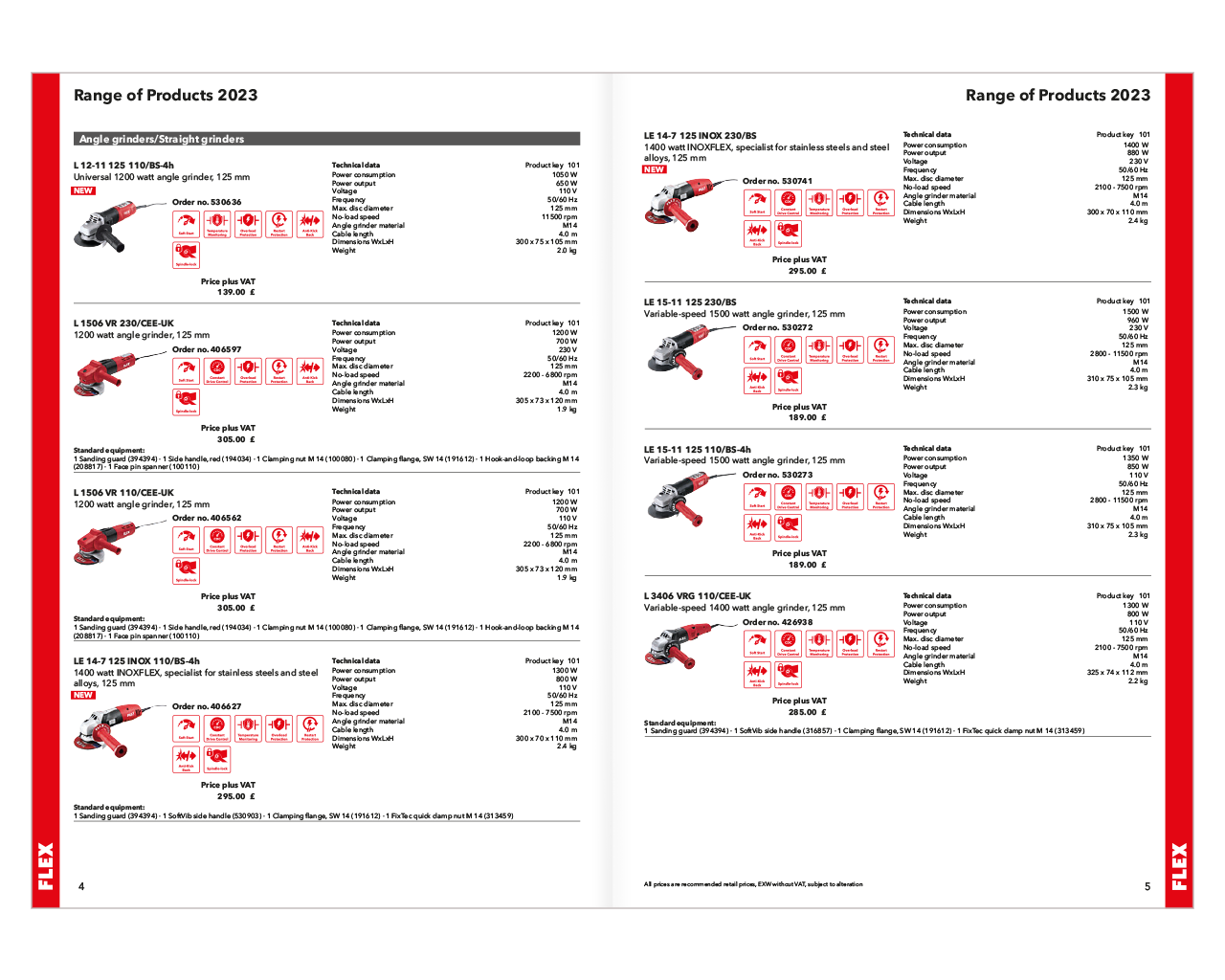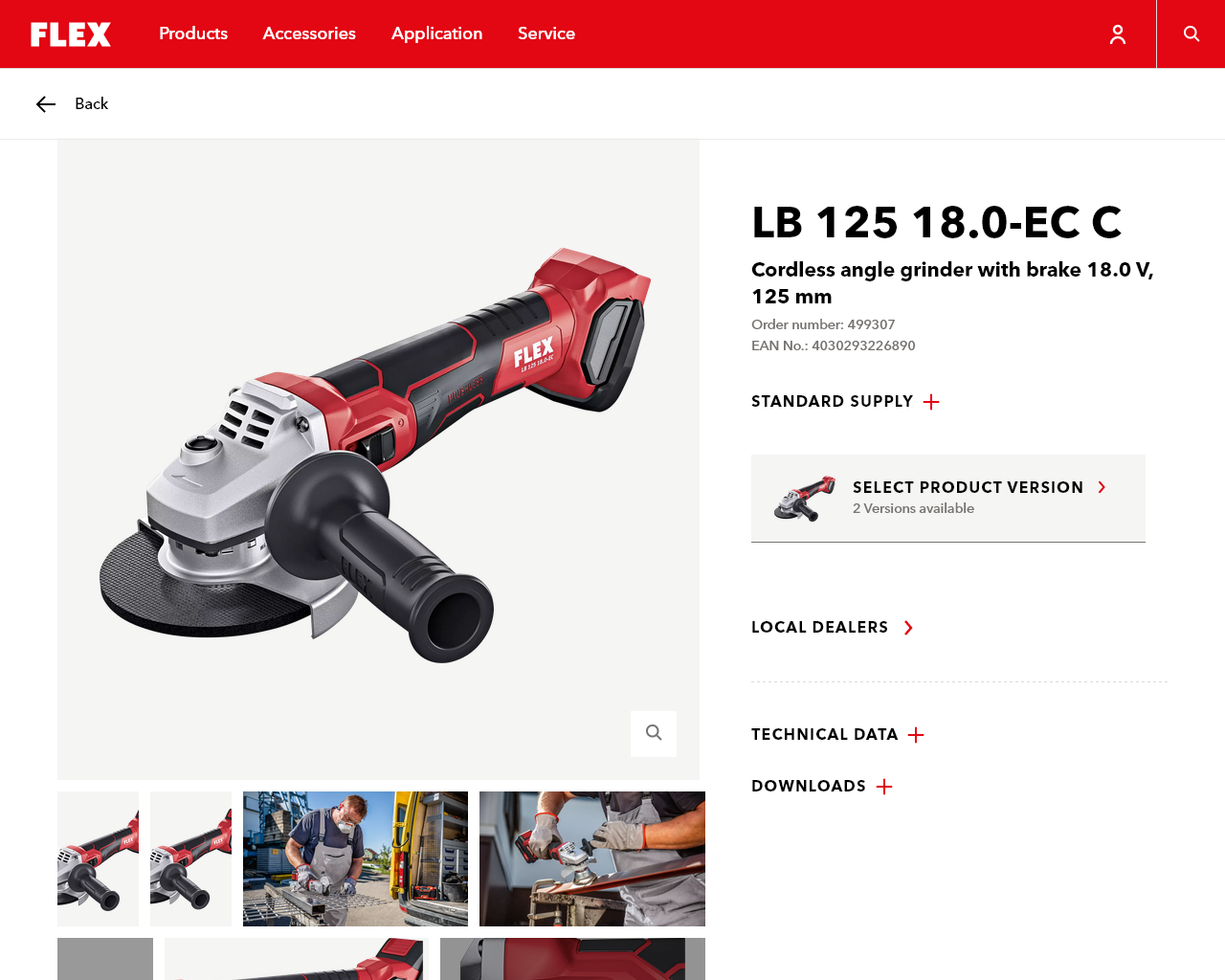
FLEX and crossbase - individual and flexible
FLEX uses crossbase as a PIM, MAM and cross-media solution
With crossbase, we were able to replace the old system - just in time for the 100th anniversary - and at the same time decentralize the processes and improve the data quality. We can now fully integrate all web, e-commerce and print requirements into one system.
Oliver Gnann-Geiger
Marketing manager, FLEX-Elektrowerkzeuge GmbH
FLEX-Elektrowerkzeuge GmbH
71711 Steinheim
Contact person:
Oliver Gnann-Geiger
Marketing manager
Tel.: +49 7144 828-195
Oliver.Gnann-Geiger@flex-tools.com
Information about the company
Type of company:
Manufacturer
Branch of industry:
Tools
Branch of industry: Power tools
Sales assortment:
approx. 2,000 products
Sales category:
101 to € 250 million
Number of employees:
approx. 340 worldwide
ERP system:
Oracle
Information on the solution
Software type: Standard software
Solution type: Individual solution
FLEX-Elektrowerkzeuge GmbH is a manufacturer of power tools. The company was founded in 1922 and made industrial history in 1954 with the first high-speed angle grinder, the DL 9. The brand name FLEX is still used colloquially by users for angle grinders today. The term "flexing" has even become established as a general term for cut-off grinding. The company, which is part of the Chervon Group, has subsidiaries and sister companies in France, Great Britain, Belgium, the Netherlands, Italy and the Czech Republic.
FLEX uses various formats to output product information to other sales channels. These include BMEcat 2005 with additional fields in nexmart format, BMEcat 2005 exports with ETIM classification and EXCEL exports. The latter includes simple EXCEL lists as well as so-called merge exports, in which predefined EXCEL lists from trading partners are supplemented with the information from crossbase and output.FLEX offers its products in numerous online stores. The loadbee platform is used for this purpose. The product information is provided with the optimally adapted REST API interface from crossbase. You can find more information here: https://www.crossbase.uk/EN/GB/news/news-flex-loadbee-2023.
Initial situation
FLEX had already been using a PIM for many years and was therefore aware of the importance of a central database for global product communication. The decision in favor of crossbase was made by the specialist department in consultation with IT, the Executive Board and the corporate group. The decisive factor was that crossbase provides a fully integrated system - with PIM, MAM, print (price list, catalog, data sheets) and diverse data provision for website, BMEcat/ETIM, nexmart, loadbee, Excelexports, etc. The convenient web-based data maintenance and translation process also played an important role: with the integrated translation management and online translation, over 10 countries are directly connected.Replacement of the existing PIM system
There can be many reasons for replacing a PIM system. Requirements often increase and the existing system can no longer meet them. Or the system is simply no longer being developed further. In the case of FLEX, the latter was the case.The challenge
Numerous applications were to be replaced or newly implemented in a short space of time
The existing PIM solution was to be replaced. To this end, the data was migrated and the data quality was optimized, i.e. consolidated and standardized, prior to import. A broad spectrum of output channels should be made possible in a short time. The external agency was connected for the automation of print productions. Data was provided to online stores and portals for 21TORR, nexmart and loadbee. Finally, trading partners are individually supplied with BMEcat/ETIM catalogs and Excel exports.The solution
PIM and MAM from crossbase
The modular standard software crossbase with Product Information Management (PIM), Media Asset Management (MAM) and Cross Media Publishing System was implemented at FLEX. Modules are used for the interface to the Oracle ERP system, translation and data provision for online stores, portals and retail partners as well as print automation.The procedure
The initial question is always how the data can best and most efficiently be transferred to the crossbase database. In the case of FLEX, the decision was made to seek professional support. This saved the company's own resources and the know-how ensured that the data migration ran smoothly. The process now runs as follows: The articles with master data are continuously imported via the standard interface to the ERP system. In crossbase, the newly imported articles are classified in the product structure by Product Management. In addition, technical features and product relationships are maintained, e.g. scope of delivery, accessories and spare parts. The media elements (photos, pictograms, drawings, operating instructions, videos, etc.) are managed in the integrated MAM on a product- or publication-specific basis. The image conversion integrated in crossbase is used for automatic preparation for print and Internet (jpg, webp, svg, etc.). The texts, including product descriptions and marketing descriptions, are entered as continuous text or generated from text modules and features. The content is translated into 17 languages.The result
Print media
The country-specific catalogs and price lists are created automatically by an external agency. Data sheets for the products are also produced fully automatically. In order to minimize the effort here, crossbase has developed a process together with FLEX in which a layout template for the data sheet is created in crossbase. The data sheets are then automatically updated and the language variants are produced. There are also plans to create (promotional) flyers and brochures using the InDesign plugin from crossbase in the future. This offers maximum design freedom while simultaneously using the content from the crossbase database. This ensures that changes in the data source also automatically affect the creative print media.Digital channels
The data for the online catalog and the media portal is made available via a REST API. Building on this, the partner 21TORR has created an appealing application with the Prismic CMS. The focus is on an application-oriented product and service world, intuitive user guidance, proximity to the target groups and a "mobile first" strategy. A detailed case study of 21TORR can be found here: https://www.21torr.com/work/flex.FLEX uses various formats to output product information to other sales channels. These include BMEcat 2005 with additional fields in nexmart format, BMEcat 2005 exports with ETIM classification and EXCEL exports. The latter includes simple EXCEL lists as well as so-called merge exports, in which predefined EXCEL lists from trading partners are supplemented with the information from crossbase and output.FLEX offers its products in numerous online stores. The loadbee platform is used for this purpose. The product information is provided with the optimally adapted REST API interface from crossbase. You can find more information here: https://www.crossbase.uk/EN/GB/news/news-flex-loadbee-2023.
Translations
The translation and correction into the required language variants is carried out directly in the country branches via the crossbase web application.
Conclusion
More automation with better data quality, standardized data maintenance and translation process
By using the crossbase software solution, FLEX now has a fully integrated system that is permanently synchronized with the ERP system. The processes have been improved and harmonized. The modular structure of crossbase enables FLEX to successively expand the system and thus work even more efficiently.
15 people from marketing, product management, media production and translation management are integrated into the process via a finely tuned authorization system. Data maintenance is supported by workflow tasks and reporting.
The crossbase solution in a nutshell
- PIM with interface to Oracle
- PIM with integrated MAM
- Text management with text generation from text modules and features
- Channel output management for controlling the output channels
- Workflow management
- Translation management and online translation in the countries
- API server with interface to Contentful CMS
- Data provision of BMEcat/ETIM catalogs and Excelexports, connection to nexmart and loadbee
- Automated, database-supported creation of print publications with InDesign
We respect your privacy
AThis website does not use cookies to collect visitor data or behavior!




